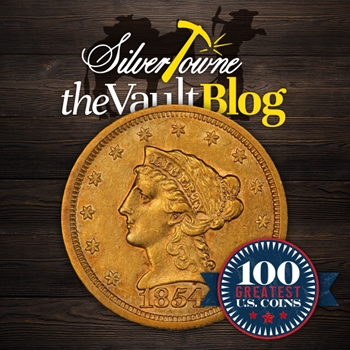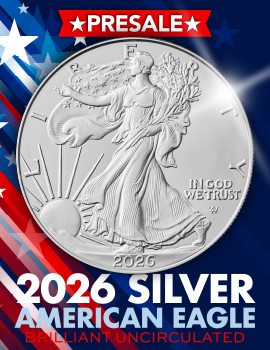
The California gold rush is a significant moment in American history that remains crucial to the development of not only the West, but in numismatics. United States coinage certainly reflects that time, especially when it comes to gold coins and their direct link to that period in 1848. That is certainly the case with our next focus in our blog series covering Whitman Publishing’s fourth edition of the 100 Greatest United States Coins. Author Jeff Garrett will help us deep dive into one of the rarest regular issue coins ever produced.
#90 – 1854-S Liberty Head Quarter Eagle
With just 246 coins minted in 1854, it is largely unknown why such a low number of quarter eagles were produced. Allegedly, it was said that the United States Mint could not get their hands on the necessary acids to remove silver from the impure gold coming out of California. However, the San Francisco Mint was able to strike an abundant number of eagles and double eagles. Depositors were asking for larger denomination gold coins to be minted, so the quarter eagle and half eagle were rarely made. That is why when the 1854-S quarter eagle was first found by Edgar Adams in 1910, it was unexpected.
Since then, other examples have been found, but the total population of known specimens is less than 20. Despite its rarity and low population, the coin is somehow still forgotten about amongst numismatists. It ranks right up there with rarities such as the 1933 double eagle, 1907 Ultra High Relief double eagle, and the 1804 dollars. One of the most significant draws to the coin is its tie to the California gold rush and the expansion of the West. Author Jeff Garrett classifies this coin as a direct tangible link to that time, making its appeal and value likely to increase even more year after year.
In 1960, the historic market value for the 1854-S Liberty Head Quarter Eagle was $1,500. By the fourth edition of this publication (2015), it rose to $300,000.







